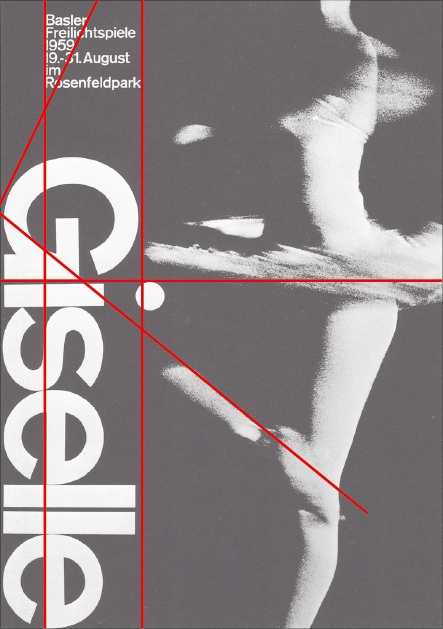The Tyranny of Participation: what Oregon Experiment can teach about decision-making
- Yuliya Pylypko

- Sep 25, 2023
- 10 min read
Updated: Sep 26, 2023
I would like to share with you my recent reading response on what is recognised as the most influential book that deals with the problems of large projects. I aimed to take a critical stance and provide arguments for why good purposes may lead to a rabbit hole.
The Oregon experiment comprises guidance for organising a participatory design, particularly in the urban planning context and discusses the learnings from the planning of the University of Oregon. The book is the third one and the most elaborate in the series. The author, Christopher Alexander, who was the head of the building project, starts by explaining the benefits of extrapolating the tested timeless “organic order”— a bottom–up planning in comparison to the top-down “masterplan process”. The book provides plenty of considerations on the motivations of various stakeholders — students, architects, funding organisations, and local councils— for large-scale projects that are funded from a centralised budget.

The author summarises the essence of the Oregon Campus Experiment using 6 principles that should lead to the timeless way of building. They are as follows: participation, piecemeal growth, patterns, diagnosis, and coordination. These principles should help overcome the rigidity of the “master plan” thinking at different stages of the design process: project emergence, selection, and funding distribution. Timeless principles should prevent useless and abandoned spaces from being constructed. The content of the book is structured into codified guidelines for communities, which are supported by given interpretations and examples.
Alexander suggests timeless design process is organised around the “patterns” or construction principles that encapsulate a variety of people’s needs. Those patterns historically have been appearing and dying, therefore organically creating the building tradition. However, the post-industrial era of large-scale projects and fast-paced change in the livelihoods and needs of people (Kurzweil, 2004) do not allow the necessary discussion and change of those building traditions. That’s why the new suggested process will speed up this normally organic process of negations and creation of these patterns, supporting their constant revision within the community. The book provides an interesting example of how the organic pre-industrial order (when people were building something they owned) could be simulated in the current economic conditions.
Henceforth I will discuss some complications that are related to the suggested approach:
1. The role of chaos and order in harmony, disharmony and entropy in the urban development context is not fully covered by the author. It is supposed, but not explicitly stated, that the right balance of orderly and organic ensures the healthy growth and development of the community and the excess of organic uncoordinated change is creating chaos (Alexander, 1975, p15). New proposed organic order is described by the author as: “the whole emerging gradually from local acts” and a result, with enough balance between the needs of the whole and the needs of the individuals (Alexander, 1975, p11). Harmony within the design discourse is often associated with order: “A just and well-governed state [of a system] is harmonious” (Lomas & Xue, 2022), but it also can be described as “unity in variety” (Nguyen & Hekkert, 2017). Alexander acknowledges that his method allows the system (building) to be in harmony and balance for longer periods for a greater number of people, in comparison to a "master plan" method, which delays harmonisation. But another question arises here: if disharmony is the pre-requisite for reaching the next harmonious state (Lomas & Xue, 2022) what amount of dissonance and disharmony may be desirable for the system to provide the necessary resource for a healthy self-development? These relationships with disharmony (chaos) as the engine for harmonisation are not covered by the author.
2. The proposed organic decision-making order still may not allow the representation of the true, organic needs of the participants, and here is why. Could organic decisions that correspond with the innate people need to be reached if every individual that is comprising the community cannot fully act in an organic, voluntary way at the discretion of his, or her agency to full potential? The citizens who are affected by the economic pressure of paying off the loan will be less different in their decisions and they will be less likely to think about changing society (Chomsky, 2013). Let's look at an example: If everyone in the community finds smoking healthy due to exposure to advertisements they will be less likely to recognise that their convictions about "harmless smoking" are arbitrary. That axiomatic conviction or belief that is shared between the participants may result in the desire to have a smoking space as a part of planning. And the question of the benefits of smoking will not even be a part of the discussion, etc. This example represents the structuralist approach in economic theory (Hickey & Mohan, 2004), which means that attitudes among individuals may not reach deeper institutional layers of systemic inequality. That means that even a perfect community-created product or system can still result in reinforcing oppression that is present within the society, as each individual is a holder of those convictions. These convictions are so familiar and ingrained as a part of non-material culture and replicated from generation to generation, for instance, the idea: that accumulation of money is representative of personal virtue, rather than a result of unfair distribution of wealth (Ruskin, 1860). Detaching from this idea might be difficult, it creates a blind spot that prevents us from seeing the structural problem. Change through participation only may not help to resolve this conviction.
3. The non-organic nature of the actions of agents within participatory systems [including the one in the Oregon Experiment] is partially caused by two inherent forces:
– the need for participation and the lack of agency of users [and therefore initiative] in the process of planning is related to the inability to directly manage the communal properties, as people are not direct owners of the community budget anymore. “The fullest kind of participation is the kind where users build their buildings for themselves.” (Alexander, 1975, p.39). It is known that the owner organically acts in the best interest of his property, but with delegated ownership that connection is broken. The proposed timeless process takes the relationships of delegated ownership as a given, and ways to restore this connection of the community on a new economic basis with account for the complexity of the organisation of modern civic society are not discussed.
– the participatory system may limit the space of actions before an unbounded free individual (who uses the benefits of natural law). The power that is given to one to participate is limiting the scope of his freedoms, rather than expanding it. From the human rights theory perspective if citizenship and rights are not gifted by the state, but attained via an agency, then the right to claim rights, or the right to participate is a preceding right, necessary for attaining other rights (Hickey & Mohan, 2004). The ability to claim new rights is part of universal human rights, which cannot be granted by anyone. One can argue that the pre-industrial natural relationships and order are unreachable with the current complexity of life and the amount of the population, but if one aims to create a new timeless order, that shouldn't be the only excuse for the researcher. The author also doesn’t acknowledge the possibility for the community to change the procedure to maintain the liveliness of the process. Therefore solely relying on the transparency of the process might help to reinforce deeper economic forces and inequalities and prevent citizens from acting according to their organic needs according to natural law to claim new rights. It is also worth noting that participatory systems, where individuals are not able to form individual will and act according to it merely serve the purpose of legitimising any kind of decision. This procedure therefore may legitimise the oppression by the same participants who suffer from it.
In Oregon Experiment participation is seen as an inherently positive quality (Alexander, 1975, p.40). The author also mentions some of the pitfalls of participation, like the lack of expert knowledge or the gap between the users that create and the users that use the product (Alexander, 1975, p.45). Later in the text author compromises with his community-driven approach. He recognises that participants might not be able to reach a vision of the complexity and a holistic bird's view, even when following and applying the patterns. In that case, he suggests experts’ guidance to avoid the “aggregation of unrelated parts, a chaos” (Alexander, 1975, p.10) and using “workable schemas”. Therefore, participants are seen as unable to have a bird's view, especially for large-scale projects, for which this community-driven process is specifically recommended to be used. More recent literature on participation showcases how it can be used solely as a marketing strategy, or an excessive requirement of the project which turns participation into tyranny for the design process (Hickey & Mohan, 2004). Therefore fair participation per ce may not ensure the desired organic process if other factors, like the preparedness of participants and ability to think systemically, as well as taking responsibility for their actions.
Ironically the main problem that the timeless process aimed to cover was a lesser possibility of incremental organic changes due to the bureaucratic process of a "master plan". However, surprisingly a substantial part of the Oregon Experiment is dedicated to concrete recommendations, like a maximum number of people, for committees, the number of support staff etc. Thus the "new order" is also creating policies around new comities and apparatus that are mimicking the governmental procedures, which creates a new slightly better, but still cumbersome process that can also slow down the incremental changes but is now on the side of the community.
How this book is relevant for designers? As Industrial Design Engineering has become increasingly connected to policymaking and organisational management, there is a greater need for Design Engineers to accustom themselves to the nature of power dynamics within the design process. The book can help to uncover the mechanism behind the idea selection that appears in larger groups of people and some of the insights that Alexander has shared can be extrapolated to any management of the design project. The content of the book is rich in details and observations of human behaviour which are useful for any project management and are curious to read. Overall, the book is worth studying as a practical example and can serve as inspiration for how to balance between the totalities of a “master plan” and a tyranny of participation and to make the design process more efficient, yet fairer.
The topic of participation that is addressed in the book is related to broad philosophical and judicial concepts and discourses, like citizenship, democracy, agency, equity, freedom of will, and responsibility, which are unfortunately not within the scope of training for an Industrial Design Engineer. However, to be able to engage in the creation of participatory practices the knowledge of the nature of those political, philosophical, and judicial discourses is required. Participation itself is rooted in the principles of participatory democracy. The value of participatory democracy and increasing citizen engagement is recognised as one of the pillars for the future by the European Commission (2022), which means enabling citizens to influence and shape policies directly. It will allow “closeness to the local communities” and is the alternative to passive democracy (quoted in Clark and Stewart 1998 as cited in Hickey & Mohan, 2004). Therefore, engaging in the discourses of participatory democracy is becoming increasingly important to engineers as well, who will need proficiency in organising those processes. However, this specific volume called "Oregon Experiment" allows us to only touch upon the surface of these concepts. The author himself acknowledges in the introduction that the Oregon Experiment process aims to address the problem of a single, centralized budget (Alexander, 1975, p.3) and therefore a lack of participation and compensate for it with the “measure of control over their own lives” for the users/citizens. That allows the author to bypass the discussion of the economic relationships that are part of participation.
The Oregon Project could be situated in the practice of a participatory approach, where the user is seen as a partner in the collaborative process (Sanders & Stappers, 2008) and since the time of the Oregon Experiment, design research has expanded to various co-design practices, like co-creation etc. Co-creation design approaches are vastly present in the curriculum of the Master's Degree (TU Delft, 2023), as well as the Delft Design Guide (Boeijen et al., 2014) and at the core of the ethos of the research-based TU Delft approach to design. “Oregon Experiment” would be of use to future Industrial Design Engineers as a practical reference point for improving one’s design process for large-scale public projects and creating an outcome that is acceptable for various stakeholders. This book is less useful for a designer who doesn’t aim to work within the public sector and aims to focus on smaller-scale projects with fewer stakeholders.
Should designers read a book? Novice designers, who are not particularly interested in politics and economics would benefit from reading the book, as it provides concrete examples of a successful participatory project. However, the discussion in the book itself is more focused on details and doesn't uncover the discourse on a systemic level. As designers are increasingly engaged in shaping and designing a society a deeper holistic understanding of complex relationships of participation is necessary for Industrial Design engineering, including economics, politics, and philosophy.
A designer should be a bit of a politician to persuade those who participate in the process that some decision is the best decision possible, and knowing how to make your decision-making process fair is essential and the book can provide some tips for that.
References
Alexander C. (1975). The Oregon experiment. Oxford University Press.
European Commission.Community of practice of the competence centre on
participatory and deliberative democracy (2022). Retrieved from https://cop-demos.jrc.ec.europa.eu/about
Hickey S. & Mohan G. (2004). Participation from tyranny to transformation? : exploring new approaches to participation in development. ZED Books; Distributed exclusively in the U.S. by Palgrave Macmillan.
Kurzweil, R. (2004). The Law of Accelerating Returns. In: Teuscher, C. (eds) Alan Turing: Life and Legacy of a Great Thinker. Springer, Berlin, Heidelberg. https://doi.org/10.1007/978-3-662-05642-4_16
Lomas, J. D., & Xue, H. (2022). Harmony in design: A synthesis of literature from classical philosophy, the sciences, economics, and design. She Ji: The Journal of Design, Economics, and Innovation, 8(1), 5-64. doi:10.1016/j.sheji.2022.01.001
Post, R., Nguyễn, T., & Hekkert, P. (2017). Unity in variety in website aesthetics: A systematic inquiry. International Journal of Human-Computer Studies, 103 doi:10.1016/j.ijhcs.2017.02.003
Sanders, E. B. -., & Stappers, P. J. (2008). Co-creation and the new landscapes of design. CoDesign, 4(1), 5-18. doi:10.1080/15710880701875068
Boeijen A. van Daalhuizen J. Zijlstra J. Schoor R. van der & Technische Universiteit Delft. (2014). Delft design guide: design methods (Revised 2nd). BIS.
TU Delft. (2023). Industrieel ontwerpen . Retrieved from https://www.tudelft.nl/onderwijs/opleidingen/masters?lookup%5B1059480%5D%5Bfilter%5D%5B22%5D%5B%5D=Type%2FMasterthema%27s%2FIndustrieel+Ontwerpen
Ruskin, J. (2010). “UNTO THIS LAST” (1860). In E. Cook & A. Wedderburn (Eds.), The Works of John Ruskin (Cambridge Library Collection - Works of John Ruskin, pp. 1-4). Cambridge: Cambridge University Press.
Image: Alexander C. (1975). The Oregon experiment. Oxford University Press, p.74








Comments